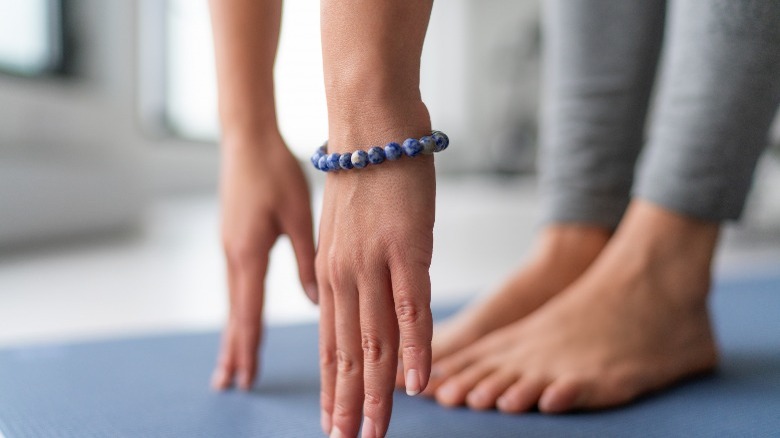This Stretching Technique Is Best Known For Increasing Flexibility And Range Of Motion
Stretching can increase your body's overall flexibility, resulting in more range of motion in your joints, per Mayo Clinic. Other benefits of increased flexibility include lowering your risk of injury, boosting your ability and performance during activities, and improving blood flow to muscles. Whether you decide to do it before or after your workout, it only takes five to 10 minutes.
Static stretching is typically done after you've finished exercising and involves holding a position anywhere from 30 to 90 seconds (via the Cleveland Clinic). Aside from releasing muscle tension, the post-workout stretching promotes more of a relaxed composure.
On the other hand, dynamic stretching warms up your muscles by imitating the same movements in the activity or sport you're getting ready to do, which can enhance strength, coordination, and blood circulation. Keep in mind, the pre-workout stretching only needs to be held for up to 30 seconds. Aside from static and dynamic, here's what you need to know about another particular stretch technique that is well known to increase flexibility, among other things.
PNF stretching
Proprioceptive neuromuscular facilitation (PNF) stretching is mostly used by people recovering from surgery or injury to increase their range of motion (via WebMD). However, professional athletes have also picked up on the method to improve flexibility. It works by stretching a muscle to the point of triggering a protective reflex that, in the end, calms the muscle (per Healthline). In fact, a 2012 study published in the Journal of Human Kinetics found that PNF stretching — when done consistently and correctly — effectively helps increase strength in muscles and overall performance. Another 2003 study published in The Journal of Strength and Conditioning Research found that PNF stretching improved flexibility following a one-hour workout. Keep in mind, both studies emphasized the efficacy of PNF stretching when done after a workout.
One PNF stretch includes the hold-relax, which starts by holding a passive, lengthening stretch, as per Healthline. Next, slightly flex the muscle, and briefly relax. Then attempt a deeper repetition of the stretch. Notably, before you move on to another stretch, relax the muscle for 20 seconds (via WebMD).
While PNF stretching can provide a variety of health benefits, it can also lead to injury if done improperly. Therefore, it's important to seek help from a professional trainer to show you the basics. Remember, stretching shouldn't cause you any pain so don't push too hard (per Mayo Clinic).


